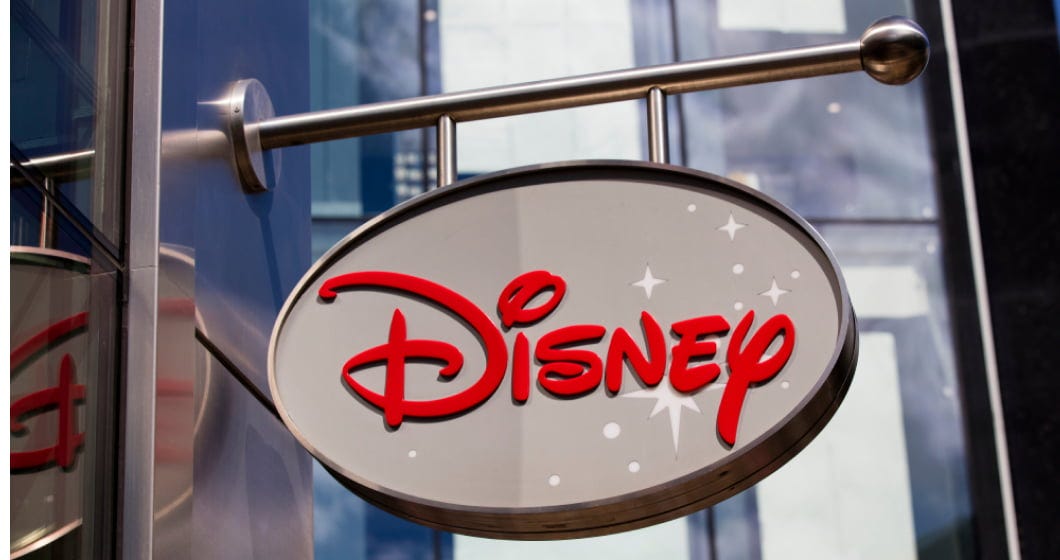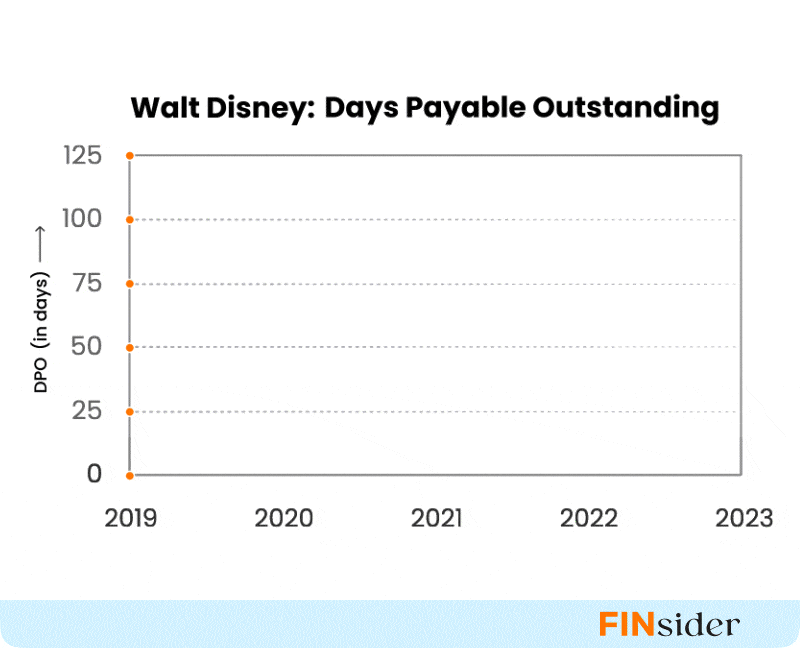Buckle up for a thrilling adventure into the financial wonderland of Walt Disney!
As a finance enthusiast, I couldn't resist delving into the magical realm of Disney's financials and was left dazzled by the enchanting comebacks in its free cash flows, working capital metrics, and more.
Come along for an exciting plunge into the financial tale that fuels the magic!
The Tale of Walt Disney’s Receivable Turnover Ratio💰
Accounts Receivables Turnover ratio (ART) represents how frequently a company collects payments from customers.
Disney's ART has improved over the years, supported by lower credit sales. The company also benefits from higher cash transactions in its most profitable segments—theme parks, experiences, and products—facilitating a rapid and efficient cash flow cycle
Yet, Disney’s ART remains below the industry average of ~9.5, likely due to its many corporate customers. However, it surpasses its competitor, Warner Bros’s ART (4.4).
Disney’s DSO tends to peak in December 📈
Days Sales Outstanding (DSO) is the average number of days a business takes to collect payments after a sale is made.
Disney has significantly reduced its DSO over the past few years, going from 56 days in 2019 to 48 days in 2023. The highest DSO in the last five years was reported during the pandemic, 68 days in 2020.
Interestingly, a quarter-wise analysis showed that the highest DSO for Disney in any financial year occurred during its October-December quarter. This could be because of the higher number of bookings (in theatres, parks, resorts, etc.) during the Thanksgiving to Christmas weeks.
Disney's DSO is higher than the industry average by around 10 days but lower than Warner Bros by 19 days.
Disney’s Negative Cash Conversion Cycle 🔁
Cash cycle measures the time it takes for a company to convert inventory expenses into cash. It is influenced by DSO, Days Payable Outstanding (DPO), and Days Inventory Outstanding (DIO).
CCC = DSO + DIO - DPO
Disney's cash cycle was -48 days in Q2 2023, with an average of -56 days over the past three years.
The cash conversion cycle deteriorated (reduced) in the last two years (2022 and 2023) primarily due to a decrease in its DPO.
Compared to 2021, DPO in 2023 shrank by 45 days, while DSO and DIO contracted only by 13 days and 3 days respectively. The larger number of days knocked out from its DPO resulted in Disney having to pay its suppliers quicker, leading to a longer cash conversion cycle.
Yet, Disney's cash conversion cycle outperforms the industry average of -3 days from 2019 to 2023, indicating a healthier cash conversion compared to its peers.
Disney reduces provision for uncollectibles 💵
Disney has reduced its provision for uncollectibles in 2023 to $115 million from $426 million in 2020, reflecting confidence in its payment collection ability and improving market sentiment.
Disney has also its receivables as a percentage of total sales in the past three years, prioritizing faster cash flow generation (14% in 2023, 15% in 2022, and 20% in 2021).
Walt Disney focuses on improving free cash flow 💸
Free cash flow is crucial for shareholders as it represents funds available for investments and dividends after expenses and capital expenditures.
COVID-19 impacted Disney's operating cash flows, causing a 42% decrease in media business operating income in 2022 ($1.06 billion). As a result, free cash flow plummeted by over 70% compared to 2020 ($3.6 Billion) and experienced a 90% decline from 2018 levels.
In 2023, however, Disney increased its free cash flow to $4.9 billion through strategic investments and cost-cutting measures totaling $5.5 billion. It has even more ambitious plans for 2024.
2024 Plans & Goals 🎯
Achieve a free cash flow of $8 billion by increasing operating profit margins in Disney Experiences business units and implementing cost efficiencies of $2 billion.
Make the streaming business unit profitable by Q4 2024.
Expand Disney Experiences with the release of sequels to popular films like Toy Story, Frozen, Zootopia, and Avatar to enhance cash flow generation.
Conclusion 🏁
Despite internal and external challenges like COVID-19 and streaming business issues, Walt Disney remains resilient and committed to recovery.
With a strong focus on free cash flow, strategic consolidation, and restructuring, the company signals a positive trajectory toward achieving its financial objectives, bolstered by robust working capital metrics.
Read the full report here: Link







